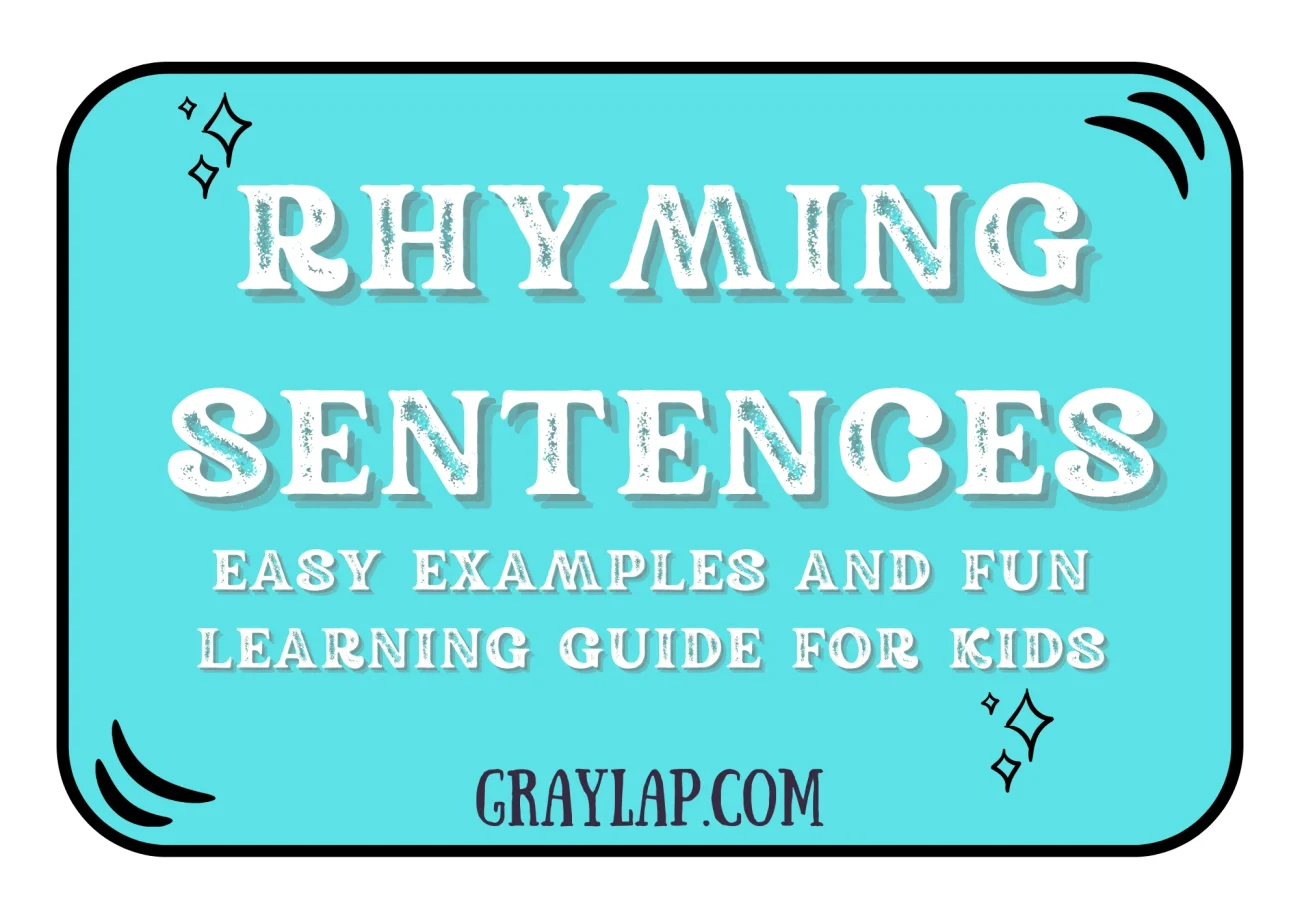Discover fun and easy rhyming sentences for kids to boost reading, listening, and memory skills. Learn with poems, games, and simple examples to make learning enjoyable. Hymns are an interesting feature of English words that make language more enjoyable, engaging, and easy to remember. Whether it’s poems, songs, or educational activities, recognizing rhyming words not only makes language more engaging but also helps students understand patterns and play with sounds. Let’s find out how these words work, what their importance is, and examples of when they can be used.
What Are Rhyming Words?
Words that end in the same or very similar sound effects are called rhyming words. They do not have to be spelled the same. For example, “blue” and “shoe” are written differently but sound the same at the end. Rhyming is commonly used in poetry, songs, and stories to create a sense of rhythm and beauty in the words.
Why Are Rhyming Words Important?
Rhyming words make learning language easier and more interesting. They help young children improve their listening skills and strengthen their memory. Knowing rhyme patterns in exams or writing exercises not only helps them recognize the structure of poems but also develops their creative sentence-building skills. Poets and songwriters use rhyme to create flow, flow, and musicality in their writing.
What Are Rhyming Words for Kids?
For children, rhyming words are those that end in the same sound. When read aloud, they create a pleasant, musical effect that is easy to remember and fun to say. For example, “cat” and “hat” both end in the “-at” sound, so they rhyme. Learning rhymes helps children recognize patterns of sounds, which is essential for reading, spelling, and speaking clearly.
Using Rhyming Words in Sentences
When children read or say rhyming sentences, they learn how they work in everyday life. Here are some simple examples:
- The cat sat on the hat.
- The frog jumped on the tree.
- The cake was placed near the lake.
- The bee flew near the tree.
- The sun had fun running.
- The ball bounced off the wall.
Why Rhyming Words Matter in Early Education
We rhyming words develop children’s basic reading and writing skills. Recognizing rhyme patterns improves children’s phonics, spelling, and reading fluency. This is why rhymes and rhymes are given special importance in early education.
FAQs
- What are rhyming words for kids?
Words that end in the same sound, such as cat and hat. - Why are rhyming words important?
They help children improve their reading, listening, and memory skills. - How can I teach my child to rhyme?
Use songs, games, and poems to practice rhyming words so that children can learn easily. - Can rhyming help with reading?
Yes! Rhyming helps children recognize word patterns, making reading easier. - Where can I find more fun language activities?
Explore the Importance of Reading Books and Types of Sentences for creative ideas!
Visit Also
Fruits Name in English – Full guide


One thought on “Rhyming Sentences: Easy Examples and Fun Learning Guide for Kids”